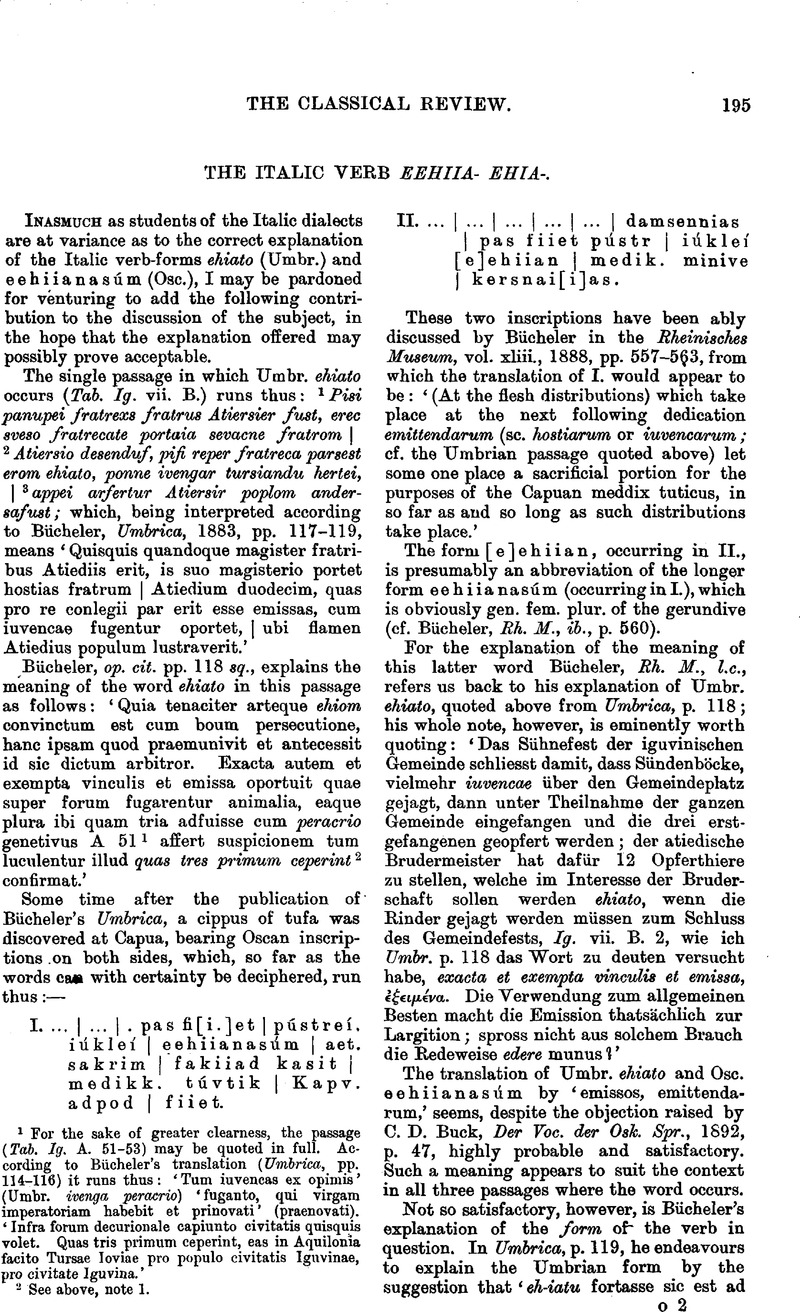No CrossRef data available.
Published online by Cambridge University Press: 27 October 2009

page 195 note 1 For the sake of greater clearness, the passage (Tab. Ig. A. 51–53) may be quoted in full. According to Bücheler's translation (Umbrica, pp. 114–116) it runs thus: ‘Tum iuvencas ex opimis’ (Umbr. ivenga peracrio) ‘fuganto, qui virgam imperatoriam habebit et prinovati’ (praenovati). ‘Infra forum decurionale capiunto civitatis quisquis volet. Quas tris primum ceperint, eas in Aquilonia facito Tursae Ioviae pro populo civitatis Iguvinae, pro civitate Iguvina.’
page 195 note 2 See above, note 1.
page 196 note 1 For the explanation of the ee in the Oscan form see Bronisch, op. cit., p. 161, Buck, op. cit., p. 175.
page 196 note 2 Elsewhere in his book, pp. 32, 36, 126, Buck says of Osc. eehiianasúm ‘Bedeutung nicht sicher’ or ‘unsicher.’